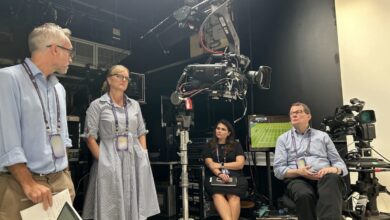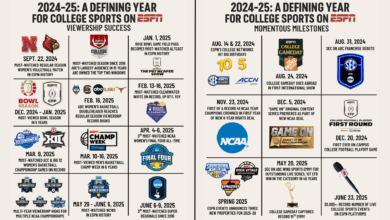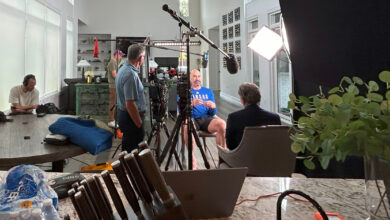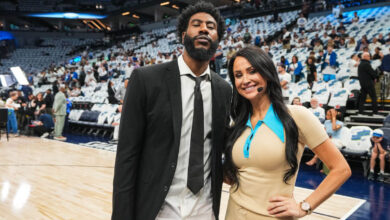ESPN at 40: Chapter 1 Of 4
ESPN at 40
BONUS CONTENT CELEBRATING ESPN'S 40 YEARS
EDITOR’S NOTE: In the course of gathering content to surround ESPN’s 40th anniversary on Sept. 7, producers spoke with dozens of current and former ESPN employees.
To commemorate its 40th anniversary, SportsCenter Special: ESPN’s 40, a collection of 40 testimonials from ESPNers past and present, will be televised Friday, Sept. 6, at 7 p.m. ET on ESPN2.
Whenever large historical projects like this are undertaken by our content creators, there is inevitably a treasure trove of material that just doesn’t make the cut. But it’d be a shame to not share some of those gems.
Front Row is honored to be able to share some of this bonus content, along with archival photos and helpful links and snippets of content that live on other ESPN platforms.
We hope you enjoy and we thank you for 40 years of fanship and memories.
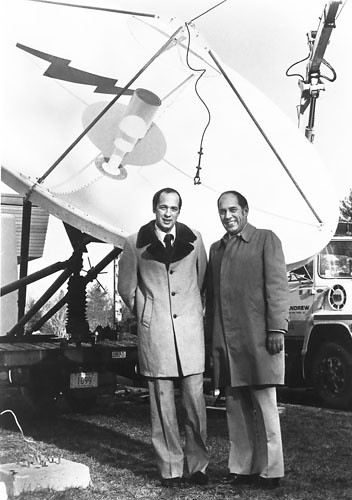
Bill Rasmussen (R) and his son Scott dreamed up the concept of ESPN while stuck in a summer traffic jam on Rte. 84 in Waterbury, Conn. Those early days were hectic yet invigorating and the foundation for an international media company was laid brick by brick.
Chapter One
It Begins
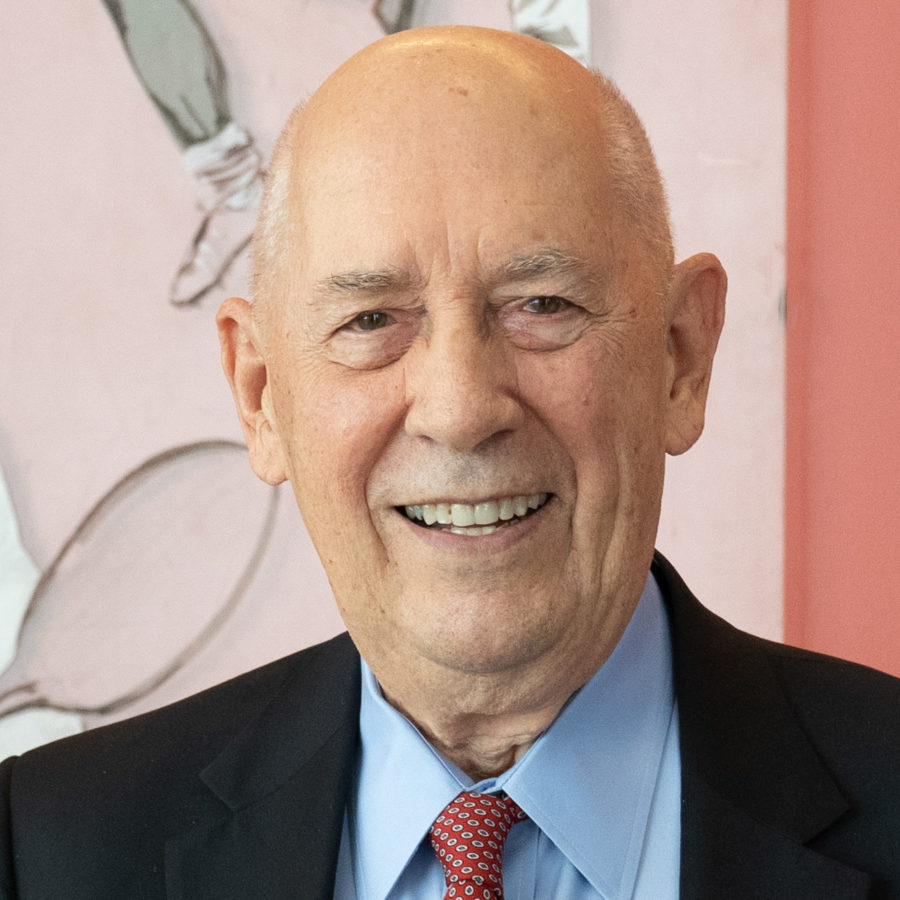
George Grande – Anchor, SportsCenter (1979-1989)
First time I heard of ESPN was when Chet Simmons and Scotty Connal called me and said, `Would you be willing to come up to Connecticut and join us for the start of a new network?’ And when I went to my superiors at CBS and said, `I’d like to get out of my contract to go up and try something that has never been done before.’ They laughed and said, `E-S, what?’ And I said, `ESPN – Entertainment, Sports Programming Network.’ And they said, `Well, we’ll let you out, but when this thing fails in a year or so, come back and we’ll have a job for you.’
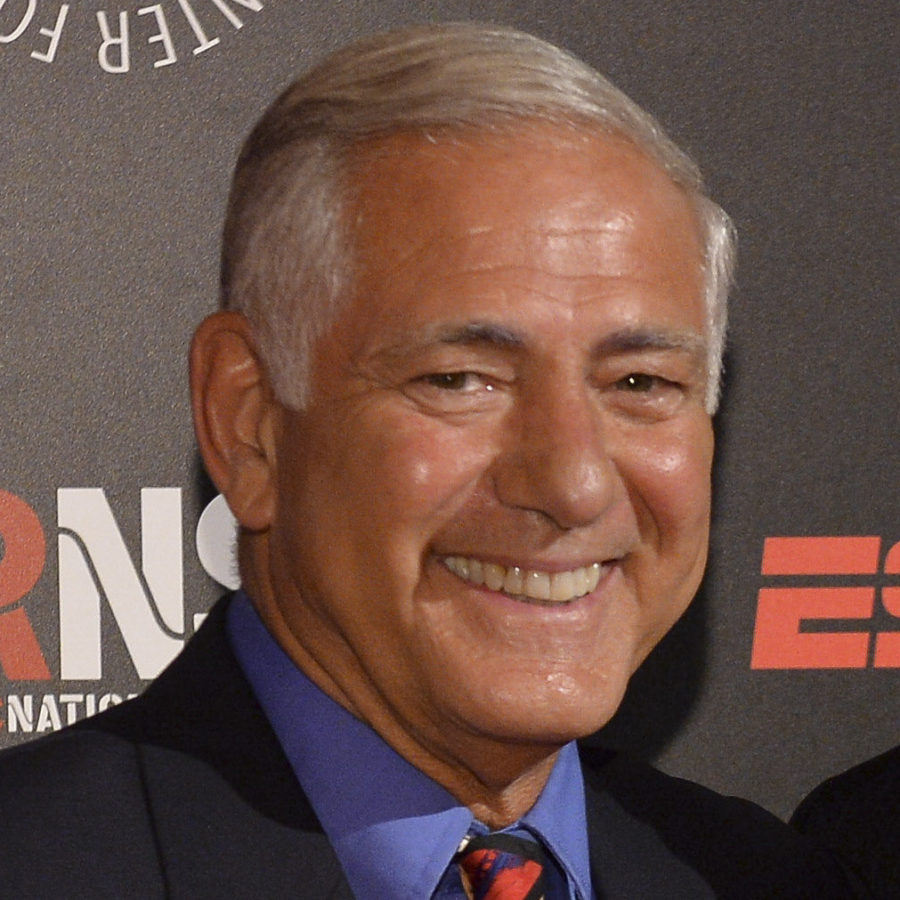

Bill Rasmussen
On September 7th, 1979, we went on the air at seven o’clock [p.m. ET]. We didn’t know if anybody would be watching. We had no idea whether the satellite would work. And then we counted down from “10”. . . and everybody held their breath. And Lee Leonard came on the air with those famous words introducing ESPN to the world.
Lee Leonard – Anchor for inaugural ESPN broadcast
If you’re a fan, what you’ll see in the next minutes, hours and days to follow may convince you you’ve gone to sports heaven.
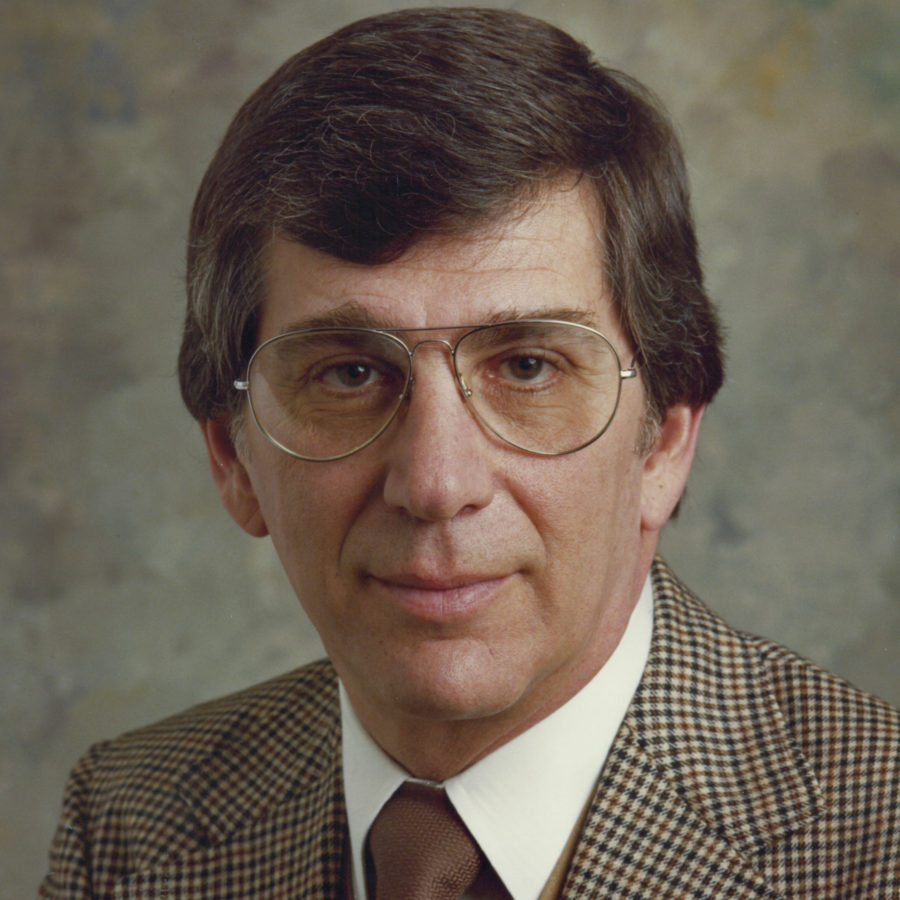

Bill Rasmussen
We waited for the phone to ring for somebody to say they were watching. We didn’t get any phone calls.
. . . a foundation is built. . .
Steve Anderson – Executive Vice President, Content Operations & Creative Services (1979-2015)
It was the summer of 1979 and I read an article in The New York Times about this little cable company up in Connecticut that has a piece of the satellite and is going to be all sports. What was my plan? Here’s what my plan was: I hoped the place stayed open long enough that I could get a couple of years of experience and go back to New York for a real job at a real network.’ That was my plan.
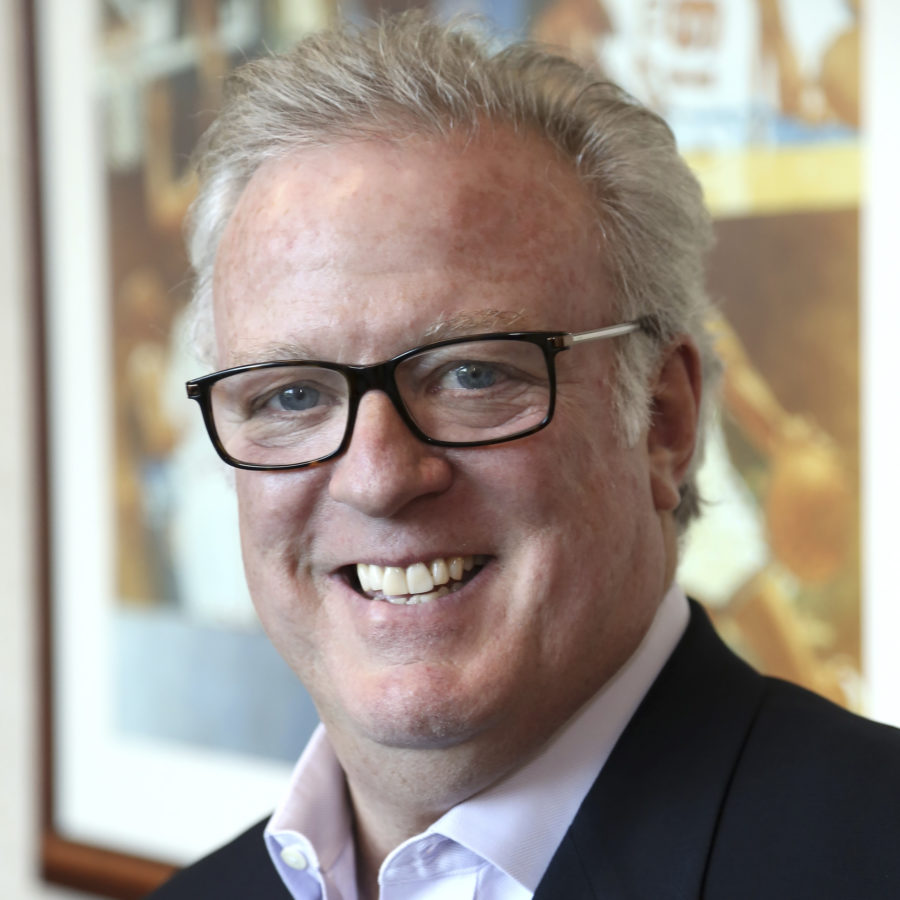


George Grande
Very often in those early days we were doing our SportsCenter, we would be lucky to have 10 minutes of highlights. The rest of SportsCenter was us talking or panels [on-screen graphics, usually full-screen] with scores or whatever. So, in those early days, there was a lot of talking, a lot of ad-libbing and maybe a highlight here or there. We had a hope that ESPN would succeed, that it would be what we all thought it could be, but we had no idea whether we’d last four weeks or 40 years.
Chris Berman – SportsCenter and NFL Anchor (1979-present)
I started at ESPN one month after we went on the air, this 24-year-old kid with long hair. Wish I’d saved some.
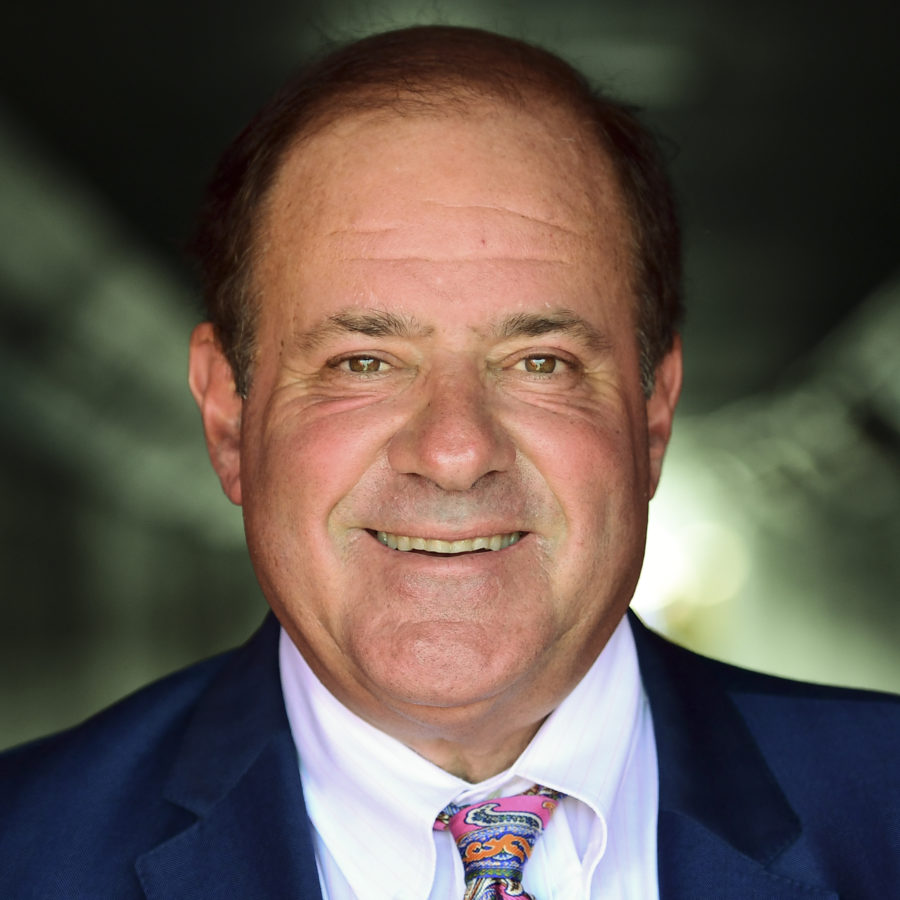
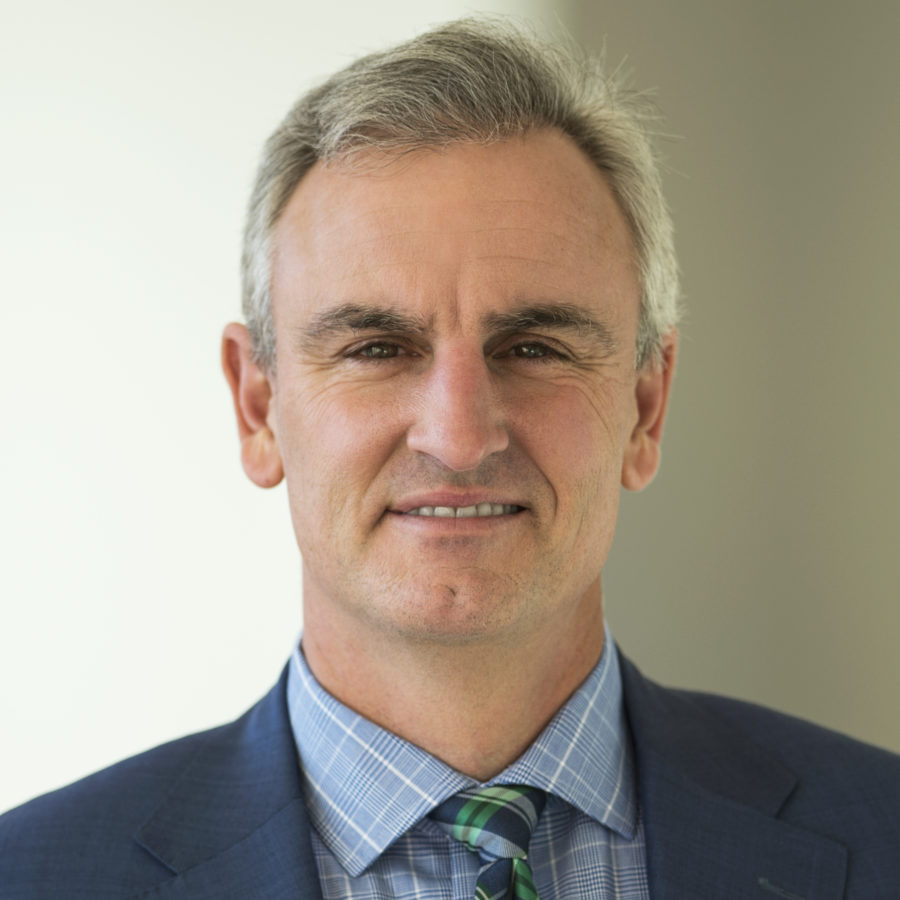
Trey Wingo – NFL Studio Host, co-host Golic & Wingo (1997-present)
When it comes to being an in-front-of-the-camera person, I am one of the very few people at ESPN that is actually from Connecticut [he grew up in Greenwich]. I went to school in Texas [Baylor] and I would turn on the cable box, and there was this ESPN channel, and I’m watching sailing, slow-pitch softball, and Australian Rules Football, and I’m like, `What is this hot mess? This is insane. It’ll never last.’
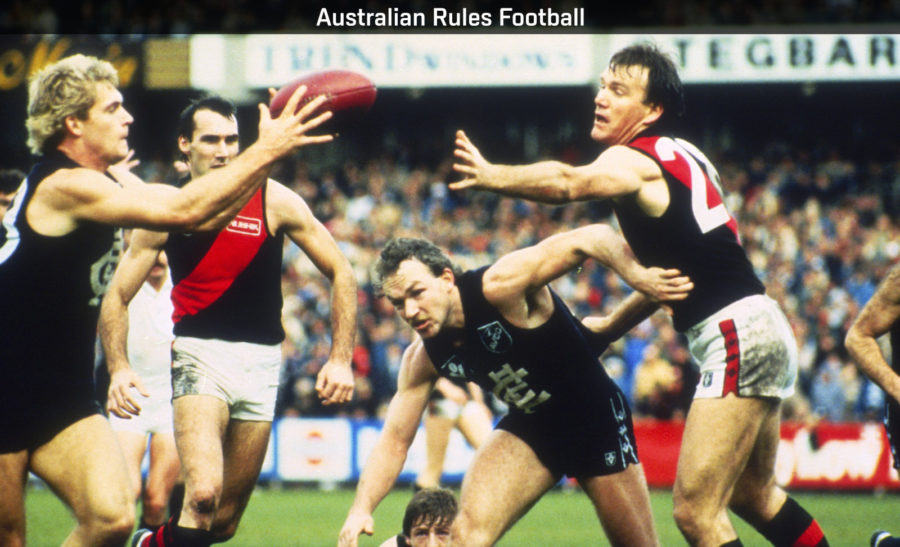
Bob Ley – Host, Outside the Lines; Anchor, SportsCenter (1979-2019)
Everybody around us in those early years was working so hard, so long. So much of it was non-verbal. We knew that it was a great opportunity. We had to keep the damn thing on the air and keep it at altitude above the runway, and we were doing that.
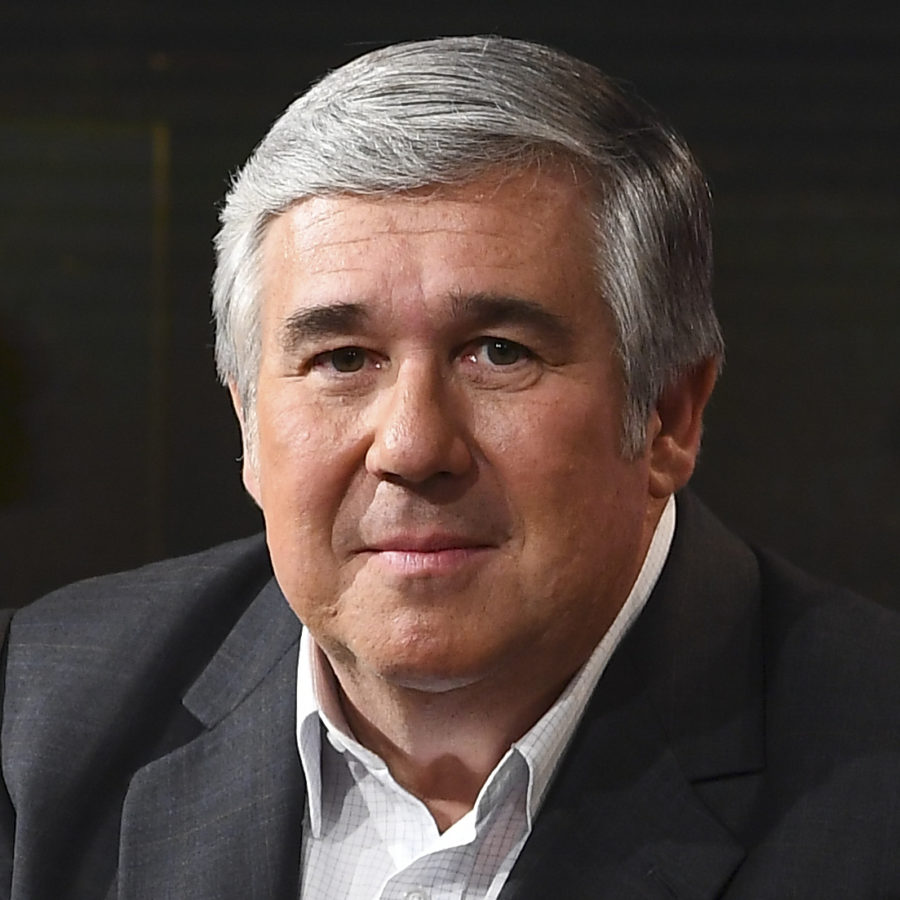
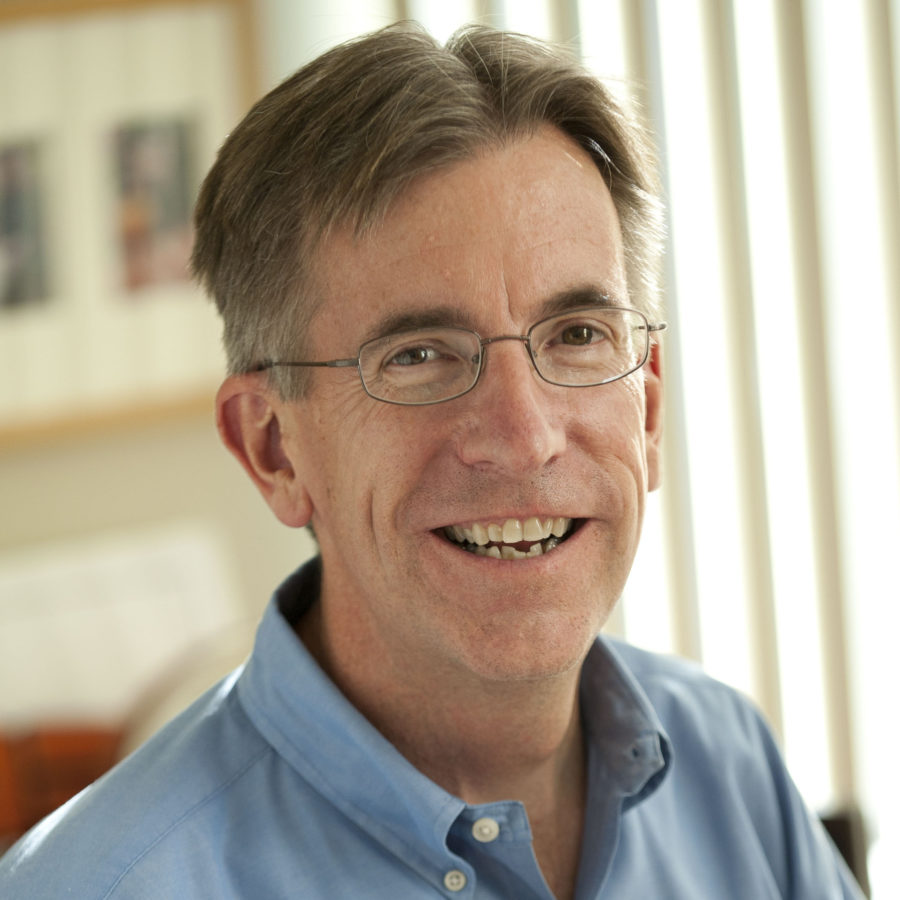
Mike Soltys – Vice President, Communications (1980-present)
In the summer of 1980, I was heading into my senior year at UConn and had a chance meeting with Bill Rasmussen. I needed an internship, so I made a quick pitch. Bill didn’t have an intern yet, but I said the magic words: `I’ll work for free.’
I pull into Bristol for the first time, one building and a bulldozer pushing a bunch of dirt around. I had a place to sit in a trailer, and in that trailer sat a television that was playing ESPN with Australian Rules Football. It wasn’t a game show. It wasn’t a soap opera. It was sports, and at that time in the U.S. on a weekday, you couldn’t watch sports.
But in 1980 in Bristol, Connecticut, you could watch sports any time of day, any day of the week, and I looked at that TV and thought, `Wow, this place is amazing.’
. . . and then comes the NFL Draft. . .
George Grande
We were at the Super Bowl in Los Angeles in 1980, and Pete Rozelle, the commissioner of the NFL was in an owner’s meeting. And Chet Simmons, Scotty Connal and I were standing outside. And Pete came out of the meeting and comes up to Chet and Scotty and shakes their hands and said, `Guys, we enjoy what’s going on at ESPN. You guys are doing a great job, it’s fantastic. I love it.’
Val Pinchbeck, the director of broadcasting was with him and he said, `Chet, what are you going to do in the winter when there’s no football?’ And Chet says, `Well, funny you mention that, because we’re thinking about maybe doing the NFL draft.
And Pete Rozelle laughed. He says, `You’ve got to be kidding me. Who’s going to want to watch the NFL draft?’ Pete leaves and Val Pinchbeck looks at Chet and Scotty and says, `You guys are serious, aren’t you? You think you can do the draft?’

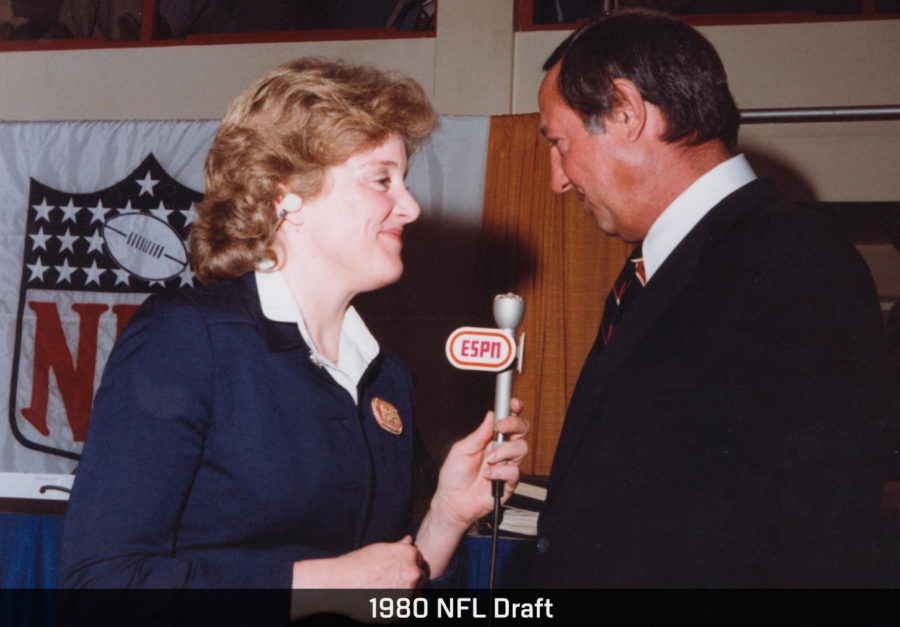

Bob Ley
Chet wanted ESPN affiliated any way he could with the National Football League, and to this day I have it somewhere at home buried in my files. I remember the full-page ad that week in The New York Times: The NFL shield and the ESPN logo in 1980 on the same page. You can’t overestimate the importance of that to the advertising community, to the New York television and national television community, putting those two together.
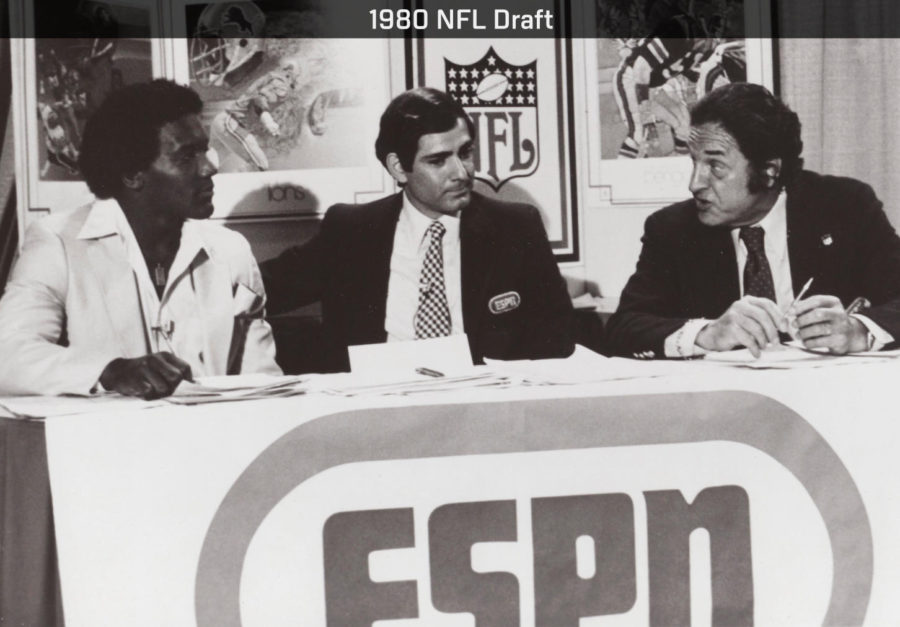
Rosa Gatti – Senior Vice President, Communications and Corporate Citizenship (1980-2013)
I helped build the Communications team that promoted ESPN across the country. That was very difficult because the media were skeptical – many didn’t have cable yet. We invited press from New York and Boston to come watch all the NCAA basketball tournament first-round games from across the country via satellite on multiple screens in the conference room. They were mesmerized, cheering buzzer-beater endings. Instant credibility for ESPN.
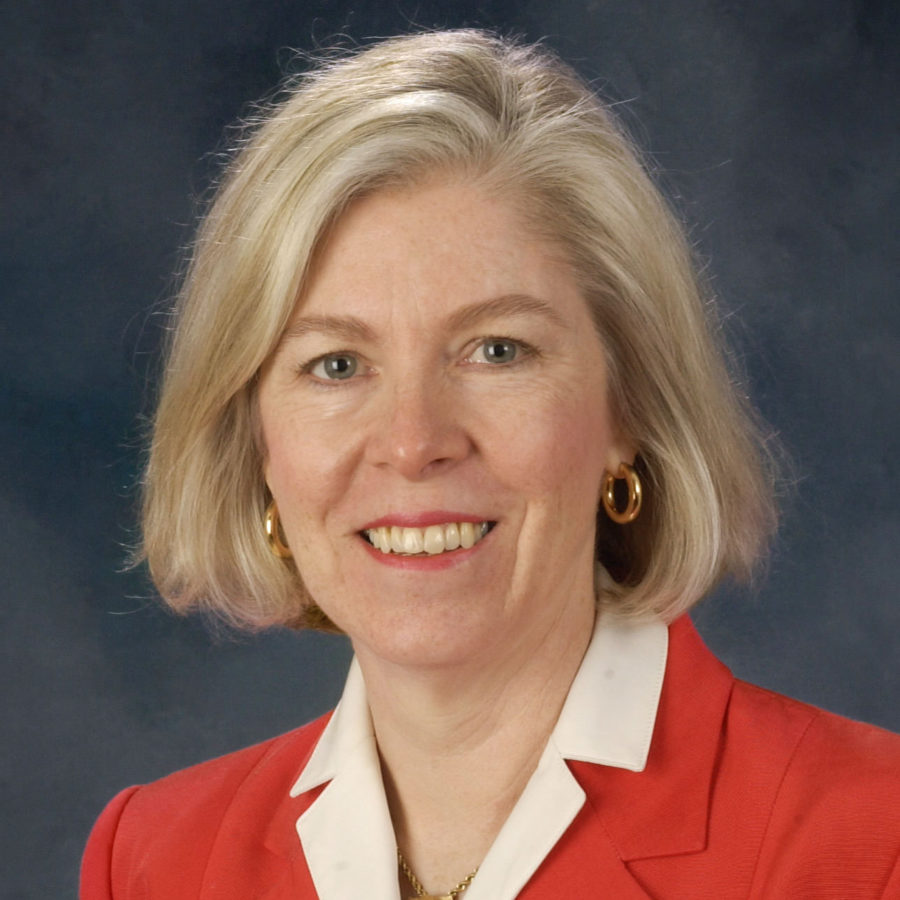
Bob Ley
Well, the NFL draft in those days was a bunch of tables of the guys sitting around in a hotel answering the phone and basically putting the picks up on the board. It wasn’t very good television.

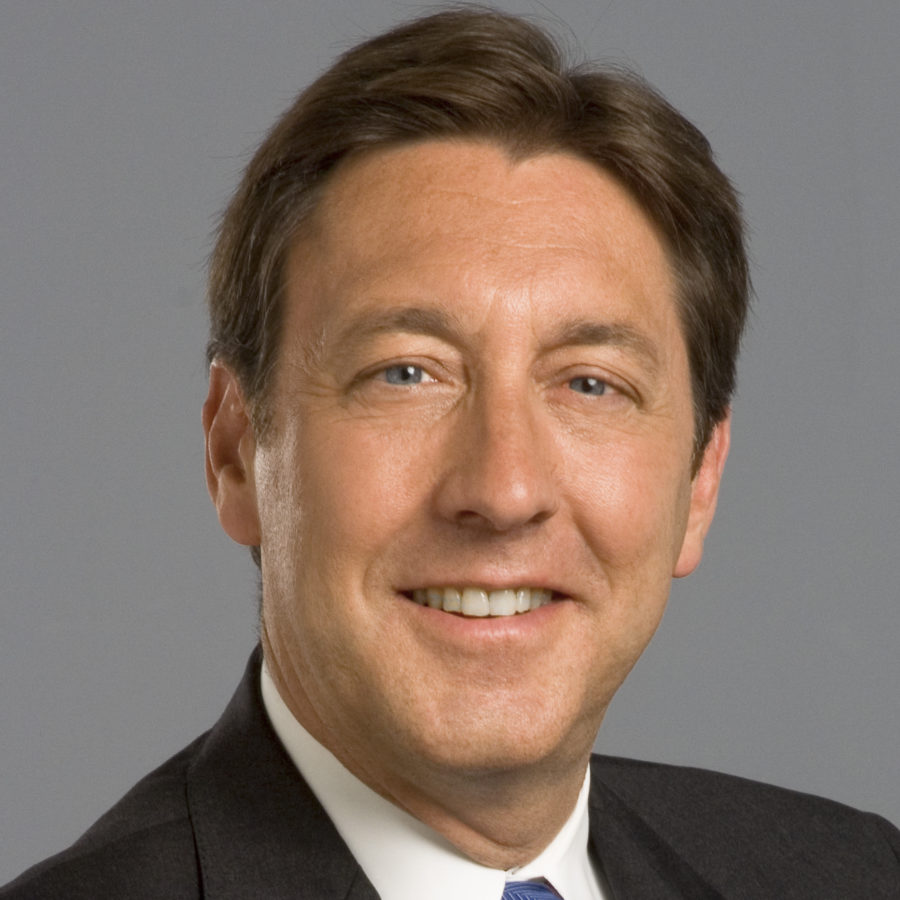
George Bodenheimer – President (1981-2011)
I had three NFL teams in my territory: the Cowboys, Oilers and Saints. My job was to go to each team and ask them to hang an ESPN banner in their respective draft war rooms. Televising the draft was so new, such a novel concept that in addition to getting the banners hung, at the same time I found myself explaining to the teams what it was exactly we were going to be doing to make a television show out of the draft, which at the time was essentially just a business meeting.
. . . and soon after, the first of many direct connections with fans. . .
Chris Berman
I get asked all the time, how did the nicknames start? Well, by accident. I always nicknamed kids when I was a camp counselor. And in my undergrad days at Brown University we’d be looking at box scores in the paper.
So, spring of 1980, and I’m doing an overnight show by myself. There was very little video, so it said: Seattle 5, Kansas City 2, and you had to make it interesting for 90 seconds. At any rate, it was either John Mayberry RFD, slugging first baseman, or pitcher Frank Tanana Daiquiri. I know because both of those date back to my days at Brown. One of the two of them slipped out. I got it in my earpiece, `What was that?’ It was almost like I had said a four-letter word, you know? But I did it and we went to commercial and people were chuckling. And the next night I used a couple more.

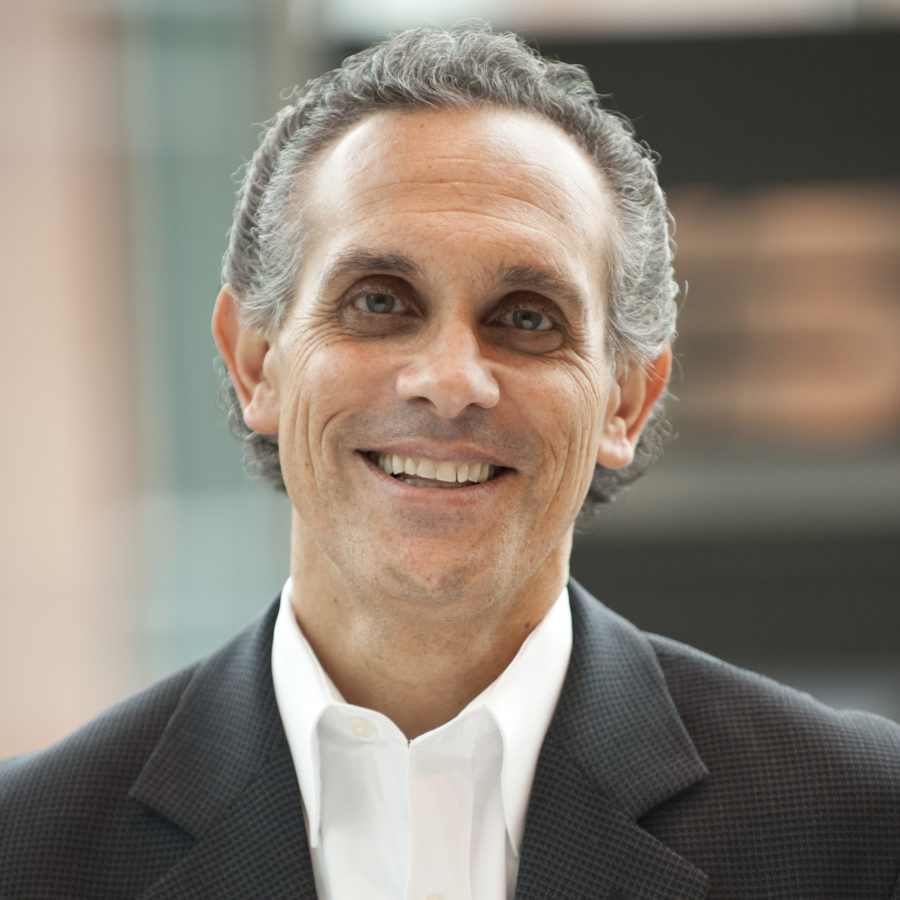
Chris LaPlaca – Senior Vice President, Corporate Communications (1980 – Present)
In the very early ‘80s, a story out of Austin, Texas had a wife divorcing her husband and naming ESPN as a co-respondent in the suit. ‘All he does is come home and watch ESPN,’ she said. He didn’t argue the point. One day the Wall Street Journal called to follow up and now I had an instant dilemma: do I delight in this guy’s misfortune because the story, for us in our infancy, was just too good? I mean, who does that? Could we be that insensitive to this guy’s plight in service to a burgeoning brand? I can’t remember exactly, but I recall the theme of what I said was something like, ‘While we are certainly sorry for both of them and wish them both the best, we appreciate that he appreciates our efforts.” I never got any blowback so I guess it was the right tact.
. . . and early signs of the innovation which continues today. . .
Chris Berman
Very early in our run, we got to cover the NFC championship game in ‘81, which was at Candlestick Park. The upstart 49ers, kind of unknown Joe Montana against the mighty Dallas Cowboys. We were on the field, we shot it. We did the standup after. You got one shot to get it right, because then everybody’s charging the field. We didn’t have a truck to feed things. We drove like Steve McQueen after all the post-game interviews into San Francisco.
We put together a five-minute piece with interviews from Montana, Dwight Clark, Eddie DeBartolo, Bill Walsh, Tom Landry and some other Cowboys. I mean, it was unreal. We edited this piece and it was the first time an edited piece had been fed in ESPN history. And it was, like, two minutes of 8:00, west-coast time, two of 11:00 in the east. And we looked up at the monitor there where it was, `Oh, my God.’ It had never been done. And that’s one of the proudest things that we’ve ever done in 40 years here.

. . . and early bumps as well. . .

Steve Anderson
There were rumors regularly that, `We’re not getting paid next month because of the financial situation.’ The word was out. You know, paychecks – if you get one, you better get to the bank fast. I’m not exaggerating.
George Bodenheimer
In 1982, I was working in our Arlington, Texas, office as a sales rep. Cable was in its infancy I was driving throughout the Southwest calling on mom and pop cable operators trying to get them to carry ESPN on their cable systems.
Everywhere I went I heard the same thing from the operators: `We can’t imagine anyone will be interested in 24-hour sports, but we will give it a try because you know, George, this is a sports town.’


Bob Ley
We knew that we were in red ink, that our owners at the time were not thrilled with that, and that there were potential buyers circling who might buy it and split it up, cannibalize it and just use it for the hardware, frankly.
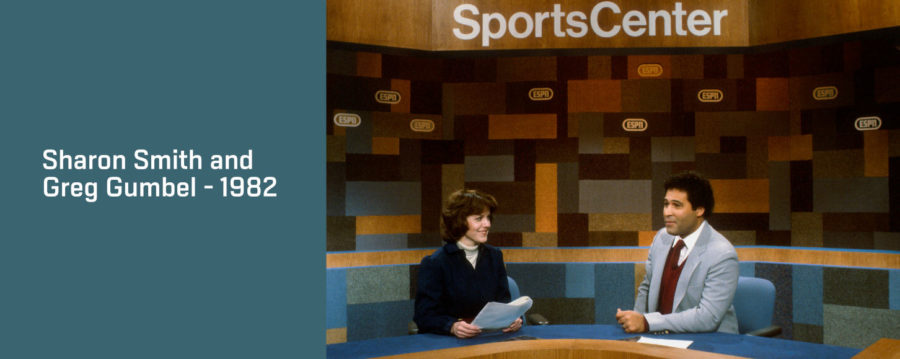
Steve Bornstein – President (1980 – 1999)
It was 1982 when we were getting pretty close to turning out the lights, when we were looking off into the abyss of destruction.
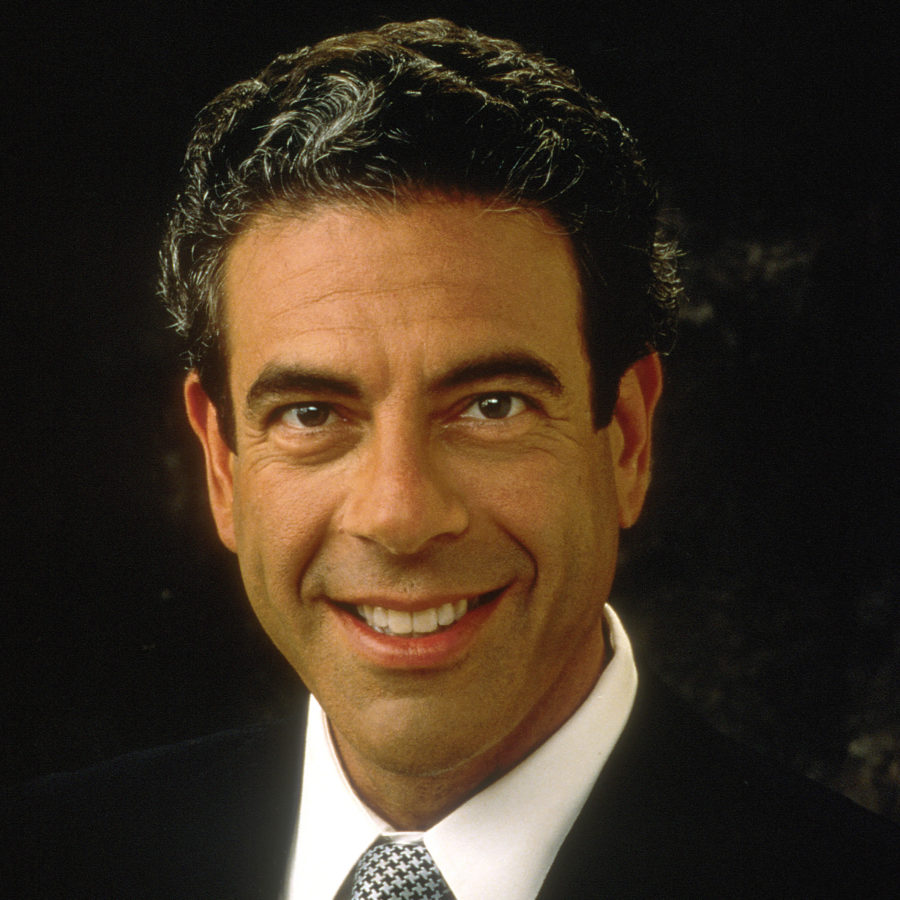

Steve Anderson
Getty Oil gave up on ESPN. It was the backer of ESPN from the start, and they’d obviously decided that they didn’t think this thing was going to work or make the kind of money that it ended up making. Getty Oil sold us and the rest is history.
Bob Ley
And of course, it all did change. ABC came in as a majority owner [in 1984]. The dual streams of revenue with affiliates came into being. Those were the game-changers. Until that moment, though, it could’ve gone either way.

. . . and the arrival of a steadying force. . .

Steve Anderson
Christine Driessen, as the chief financial officer, was the giant driving force behind the financial success of ESPN for 30 years and through three presidents.
Christine Driessen – CFO (1985-2018)
For many, many years I was the only female in the room. And you learn to quickly get a thick skin, but also stand up for yourself and demand self-respect. In many instances people thought I was a secretary or didn’t really know why I was in the room.
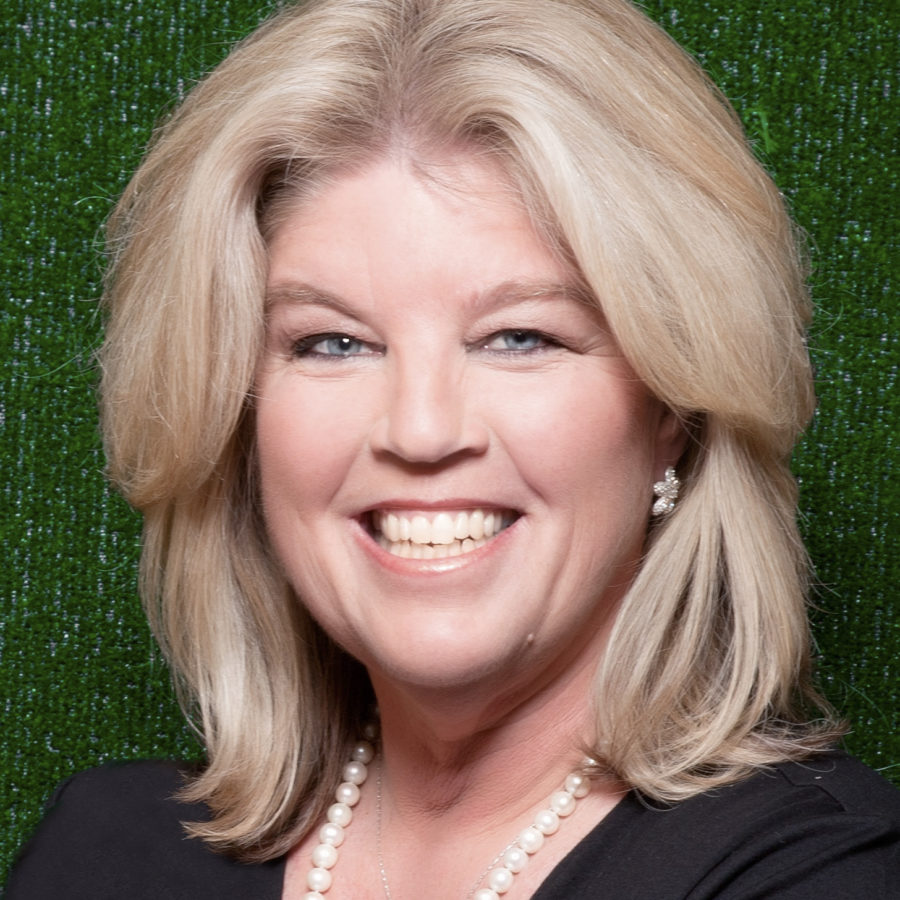
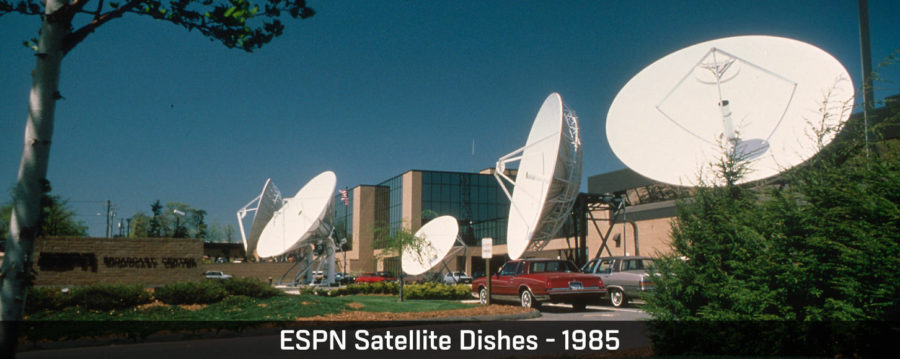

Steve Bornstein
We had a model that was very similar to network television model, where initially we paid for distribution to the cable operators and we were going to make all our money by selling advertising. It became pretty clear that we couldn’t make that, so we couldn’t be sustainable. And so we were the first in the business (1983) to start charging the fee for ESPN and that was what turned it around.
Christine Driessen
That was a huge change in the business model. And people started to realize there was this phenomenal content that you couldn’t get anywhere else.

. . . such as. . .

Christine Driessen
We had the [1987] America’s Cup [from Australia], which put us on the map in many ways, this suddenly live sports content coming from around the world LIVE, where America was in the hunt for first place and winning the Cup.
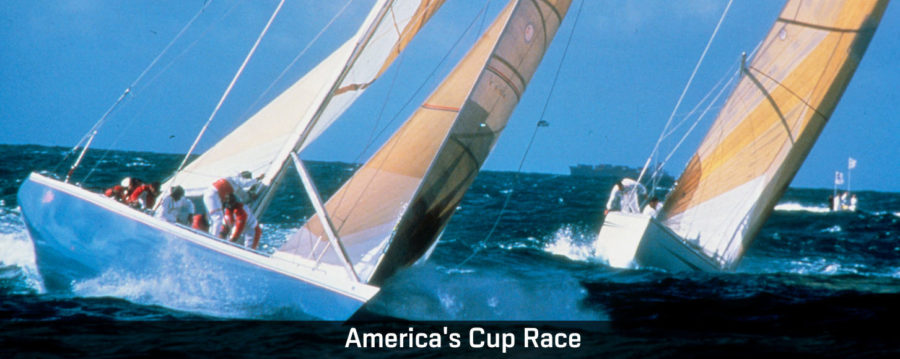
Steve Bornstein
America’s Cup was just an amazing event that captured a lot of people’s imagination. No one ever thought of yacht racing as a spectator sport. You had such a great hero, Dennis Conner, and villains, and it just it really fulfilled the promise of cable giving you something that you couldn’t get on network television.


George Bodenheimer
ESPN was televising those races and the pictures were unbelievable coming off the ocean, middle of the night back here in the United States. I think that it really helped set the stage for our NFL contract that we got that same year.
. . . BINGO!. . .
Steve Bornstein
Putting NFL games on totally legitimized ESPN, and it enabled us to actually raise our rates pretty quickly.


Steve Anderson
That was absolutely huge. I think internally and externally, the fact that ESPN got the NFL meant that we were now real players in the industry. For the first time, people within the industry said, `Boy, these guys are for real.’ And it was a big moment when that contract was signed. The fact that we could say we had the NFL and we also got NFL studio programming and the rights to do NFL GameDay and NFL Primetime.
Chris Berman
Well, if you wrote my professional tombstone, it’s `He did NFL Primetime with Tom Jackson.’ It was the brainchild of Pete Rozelle and Steve Bornstein. We wanted to do an hour of highlights, as much as we can show, leading into what then was Sunday Night Football, which we had for the last eight games in 1987. Remember, back then you only got three games on TV. So we were your only place to see it. And it was fun because we provided the football world a gathering place to see their sport.

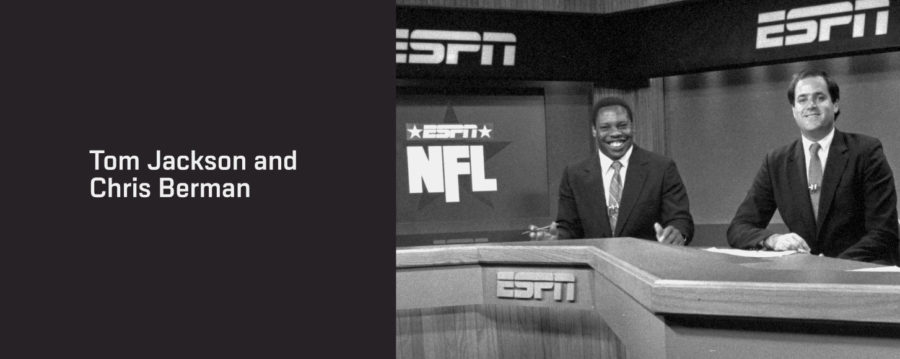
. . . and a place to get authoritative sports news. . .

Bob Ley
Probably the most significant journalistic inflection point in the early years was the hiring of John Walsh, who came in initially as a consultant, and then essentially as the news director. Steve Anderson, who had been working in the company in production came in as well, working with John. And together, they gave form and substance to what had been scores and highlights.
Chris LaPlaca
So many of the stories about us in those early days talked about Australian Rules Football and all the other unusual sports we televised, and we all got that. ARF was fun, and it was totally fresh. But we also knew we were presenting great college basketball games on weeknights, live Top Rank Boxing, the early rounds of the NCAA Basketball Tournament, SportsCenter. These were all great angles for stories about the promise of ESPN as well. We were all sports fans, and we liked all of it – the new and the familiar. So we had faith amidst consistent skepticism.


Steve Bornstein
I won’t say the kids were running the store, but there wasn’t much adult supervision of SportsCenter in the early days and most of the stuff they did was on late or on the weekends. And so there was no management here. And John I think put in real journalistic discipline and structure.
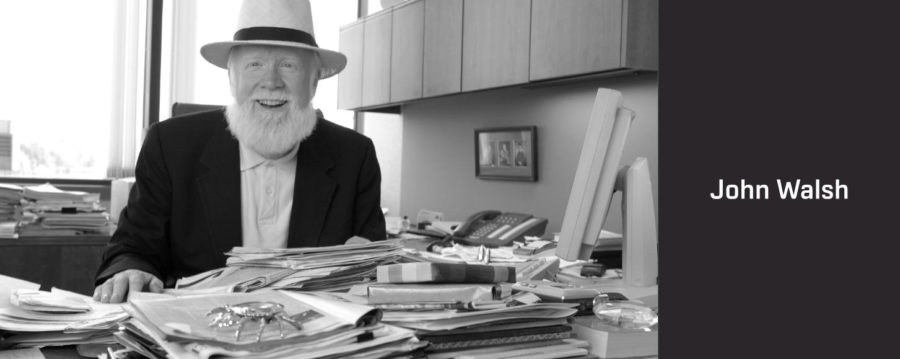
Steve Anderson
We were making all this stuff up as we went along. There was this sense that we could try anything. If we tried something on a Monday and it worked, we do it again Tuesday. If we tried something on Monday and it didn’t work, we’d try something else on Tuesday. It was that sort of spirit, like, `Hey we’ve got nothing to lose here and we only have things to gain, so let’s just keep trying things and see what sticks.
The Pete Rose story, betting on baseball and being banned. . . we jumped all over that story like we had never done in the prior years. It was one of the moments that just started us saying, `You know what? We can do this and we can do it as well or better than anybody else.’


Bob Ley
That was an interesting confluence of the Pete Rose story, where I think we had a leadership position in it through much of the summer of 1989. And the World Series earthquake, where we were the first and only national live voice 20 minutes after it had hit.
Jay Rothman – Vice President, Production (1988-present)
Game Three of the World Series, and I was sitting in the newsroom, a young producer producing the 2:00 a.m. ET SportsCenter, watching the game, preparing for the show, and the earthquake hit. And all of a sudden, ABC got knocked off the air. But we didn’t. We had a generator out there.
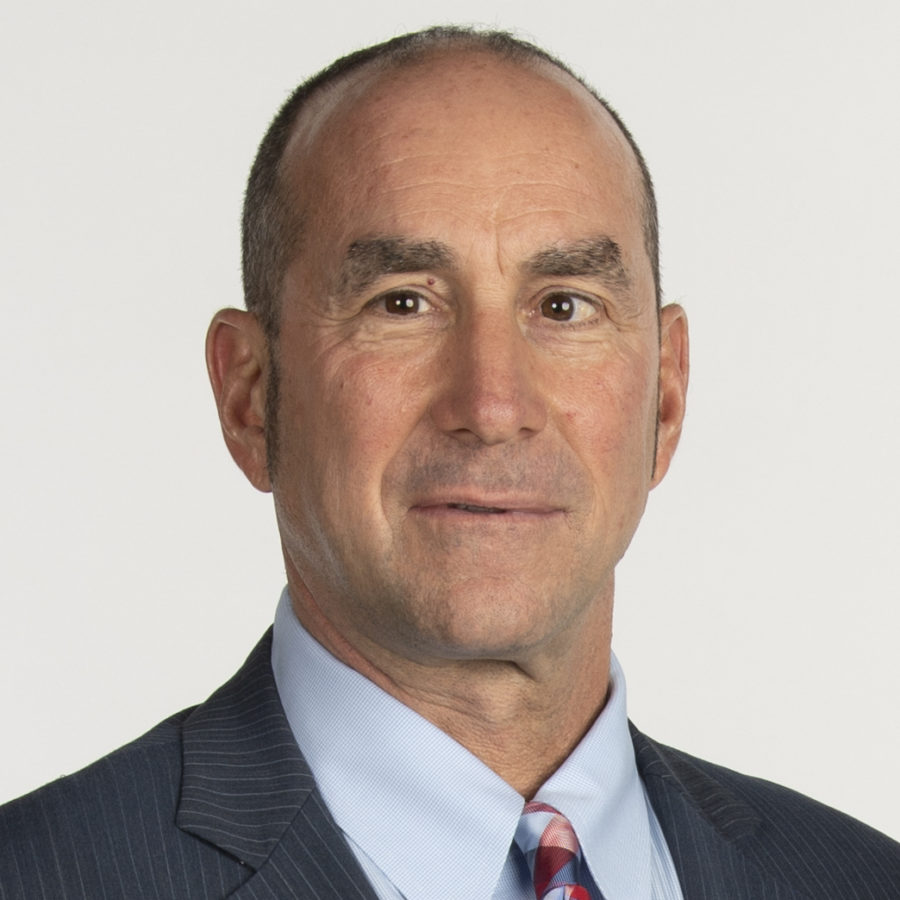
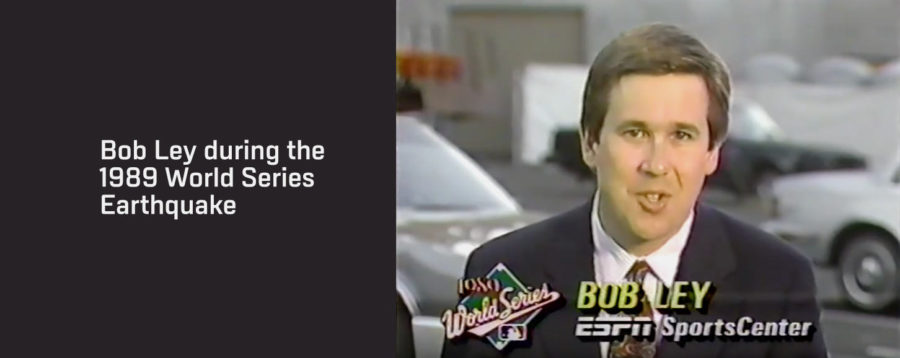

Bob Ley
We fired up the camera and to this day, the most amazing thing about those 15 or 20 minutes from the earthquake to when we signed on, everybody in our ESPN family out there, several dozen people – we didn’t have cell phones, it was 1989!– they knew exactly what to do without being told. They were all over acres and acres of Candlestick Park, but they knew, `We’ve got to get to work. There’s a story to be told here and reported.’
Jay Rothman – Vice President, Production (1988-present)
And in the moment, it was Bob Ley and Chris Berman who both reported so eloquently and calmly what was going on. Images were coming in of the Bay Bridge being torn up, and the chaos that was going on out there. I remember having such a great sense of pride for Bob and for Chris and for our company, for what it meant for us to be there in that moment. They did a terrific job. That moment represented we were more than scores and highlights, that we were capable of delivering on news in the moment.

. . . but boy did it mess with households!

Bill Rasmussen
With ESPN being on the air 24 hours a day, people weren’t used to seeing sports on Monday, Tuesday, Wednesday – they’d been used to seeing something on the weekends.
I remember I was golfing one day and walking to the first tee and Joe, my neighbor, said to me, `My sister hates you.’ I said, `I didn’t even know you had a sister.’ He said, `Oh yeah, and she hates you because of your March Madness coverage. Every day you’ve got a basketball game live or on tape and I’m sitting there watching, so she hates you.’
And that’s when I realized we had really arrived.
Coming Tomorrow - Chapter 2
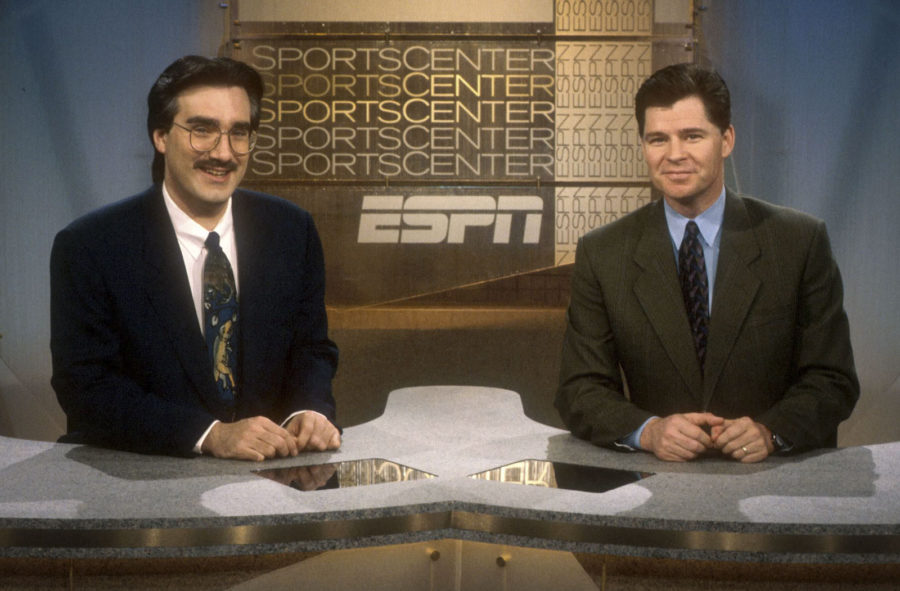
As ESPN entered its second decade, SportsCenter, with its clever anchors and creative producers, was evolving into a mainstream phenomenon. With its footing firmly established, the network began expanding its portfolio of studio programming and live events and the ESPN rocket ship was being turbo-boosted.

